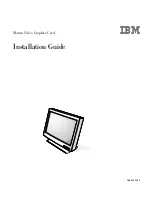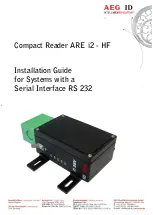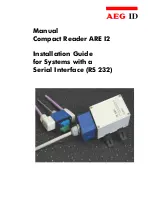
Theory of Operation 27
2.6 Network Interrupts
The
RFM
‐
5565
is
capable
of
passing
interrupt
packets,
as
well
as
data
packets,
over
the
network.
The
network
interrupt
packets
can
be
directed
to
a
specific
node
or
broadcast
globally
to
all
other
nodes
on
the
network.
Each
network
interrupt
packet
contains
the
sender’s
node
ID,
the
destination
node
ID,
the
interrupt
type
and
32
bits
of
user
defined
data.
The
types
of
network
interrupts
include
four
general
purpose
interrupts
and
a
reset
node
request
interrupt.
Node
specific
interrupts
are
sent
by
configuring
three
RFM
Control
and
Status
registers.
Each
receiving
node
evaluates
the
interrupt
packets
as
they
pass
through.
If
a
general
purpose
interrupt
is
directed
to
that
node,
then
the
sender’s
node
ID
is
stored
in
the
appropriate
Sender
ID
FIFO
(one
of
four).
Each
Sender
ID
FIFO
is
127
locations
deep.
The
accompanying
data
will
be
stored
in
a
companion
127
locations
deep
data
FIFO.
If
enabled
through
the
LISR,
LIER
and
INTCSR
registers,
any
of
the
network
interrupts
can
also
generate
a
host
PCI
interrupt
at
each
receiving
node.
The
reset
node
request
interrupt
is
not
stored
in
a
FIFO
like
the
four
general
purpose
interrupts.
Furthermore,
it
does
not
cause
an
immediate
reset
of
the
board.
Instead,
it
sets
a
bit
in
the
LISR
register,
which
will
result
in
a
PCI
interrupt
if
enabled.
The
actual
board
reset
should
be
performed
by
the
host
system
in
an
orderly
fashion.
However,
the
user
application
could
use
this
network
interrupt
for
any
purpose.
2.7 Redundant Transfer Mode of Operation
The
RFM
‐
5565
is
capable
of
operating
in
a
redundant
transfer
mode.
The
board
is
configured
for
redundant
mode
when
switch
S1
position
1
is
in
the
ON
position.
In
the
redundant
transfer
mode,
each
packet
transfers
twice,
regardless
of
the
packet
size.
The
receiving
circuitry
of
each
node
on
the
network
evaluates
each
of
the
redundant
transfers.
If
no
errors
are
detected
in
the
first
transfer,
it
is
used
to
update
the
onboard
memory
and
the
second
transfer
is
discarded.
However,
if
the
first
transfer
contains
an
error,
the
second
transfer
is
used
to
update
the
onboard
memory
provided
it
has
no
transmission
errors.
If
errors
are
detected
in
both
transfers,
the
transfers
will
not
be
used
and
the
data
is
completely
removed
from
the
network.
Redundant
transfer
mode
reduces
the
chance
that
any
data
is
dropped
from
the
network.
However,
the
redundant
transfer
mode
also
reduces
the
network
data
transfer
rate.
The
single
Dword
(Double
‐
word
=
4
bytes)
transfer
rate
drops
from
the
non
‐
redundant
rate
of
43
MByte/s
to
approximately
20
MByte/s.
The
16
Dword
(64
byte)
transfer
rate
drops
from
the
non
‐
redundant
rate
of
170
MByte/s
to
the
redundant
rate
of
85
MByte/s.
















































